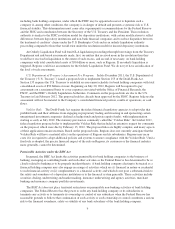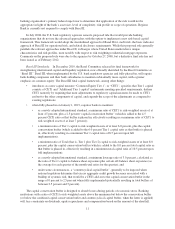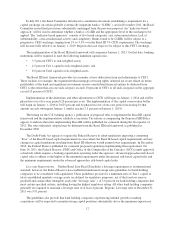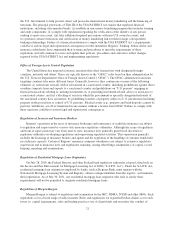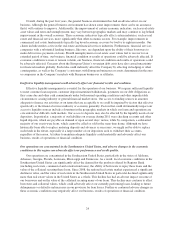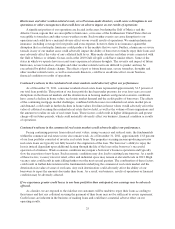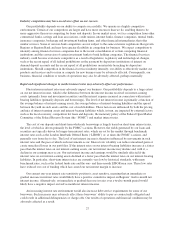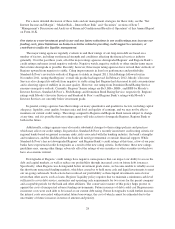Regions Bank 2011 Annual Report Download - page 43
Download and view the complete annual report
Please find page 43 of the 2011 Regions Bank annual report below. You can navigate through the pages in the report by either clicking on the pages listed below, or by using the keyword search tool below to find specific information within the annual report.U.S. Treasury Capital Purchase Program
Pursuant to the CPP, on November 14, 2008, Regions issued and sold to the U.S. Treasury in a private
offering, (i) 3.5 million shares of the Fixed Rate Cumulative Perpetual Preferred Stock, (“Series A Preferred
Stock”) and (ii) a warrant (the “Warrant”) to purchase 48,253,677 shares of Regions’ common stock, at an
exercise price of $10.88 per share, subject to certain anti-dilution and other adjustments, for an aggregate
purchase price of $3.5 billion in cash. The securities purchase agreement, dated November 14, 2008, pursuant to
which the securities issued to the U.S. Treasury under the CPP were sold, grants the holders of the Series A
Preferred Stock, the Warrant and the common stock of Regions to be issued under the Warrant certain
registration rights in order to facilitate resale, and subjects Regions to certain of the executive compensation
limitations included in the Emergency Economic Stabilization Act of 2008 (“EESA”), as amended by the
American Recovery and Reinvestment Act of 2009 (“ARRA”).
Depositor Preference
Under federal law, depositors and certain claims for administrative expenses and employee compensation
against an insured depository institution would be afforded a priority over other general unsecured claims against
such an institution in the “liquidation or other resolution” of such an institution by any receiver.
Incentive Compensation
Guidelines adopted by the federal banking agencies pursuant to the FDIA prohibit excessive compensation
as an unsafe and unsound practice and describe compensation as excessive when the amounts paid are
unreasonable or disproportionate to the services performed by an executive officer, employee, director or
principal stockholder.
In January 2010, the FDIC announced that it would seek public comment on whether banks with
compensation plans that encourage risky behavior should be charged higher deposit assessment rates than such
banks would otherwise be charged. The comment period ended on February 18, 2010. As of February 2012, a
final rule has not been adopted.
In June 2010, the Federal Reserve issued comprehensive guidance on incentive compensation policies (the
“Incentive Compensation Guidance”) intended to ensure that the incentive compensation policies of banking
organizations do not undermine the safety and soundness of such organizations by encouraging excessive risk-
taking. The Incentive Compensation Guidance, which covers all employees that have the ability to materially
affect the risk profile of an organization, either individually or as part of a group, is based upon the key principles
that a banking organization’s incentive compensation arrangements should (i) provide incentives that do not
encourage risk-taking beyond the organization’s ability to effectively identify and manage risks, (ii) be
compatible with effective internal controls and risk management, and (iii) be supported by strong corporate
governance, including active and effective oversight by the organization’s board of directors. Any deficiencies in
compensation practices that are identified may be incorporated into the organization’s supervisory ratings, which
can affect its ability to make acquisitions or perform other actions. The Incentive Compensation Guidance
provides that enforcement actions may be taken against a banking organization if its incentive compensation
arrangements or related risk-management control or governance processes pose a risk to the organization’s safety
and soundness and the organization is not taking prompt and effective measures to correct the deficiencies.
In March 2011, the Federal Reserve and other federal banking agencies requested comments on a notice of
proposed rulemaking designed to implement provisions of the Dodd-Frank Act prohibiting incentive
compensation arrangements that would encourage inappropriate risk taking at a covered institution, which
includes a bank or bank holding company with $1 billion or more of assets, such as Regions and Regions Bank.
The proposed rule (i) prohibits incentive-based compensation arrangements that encourage executive officers,
employees, directors or principal shareholders to expose the institution to inappropriate risks by providing
excessive compensation (based on the standards for excessive compensation adopted pursuant to the FDIA) and
19


